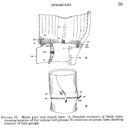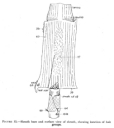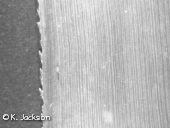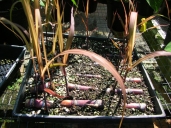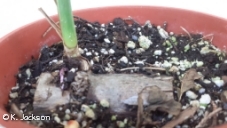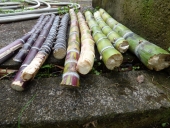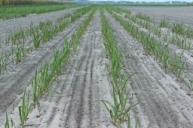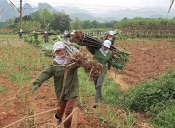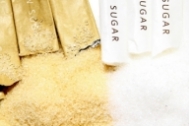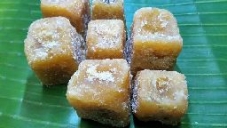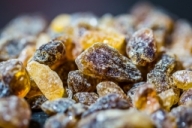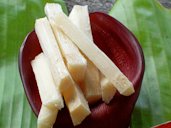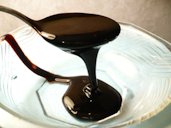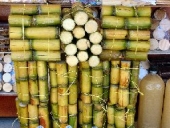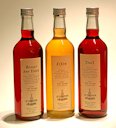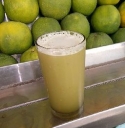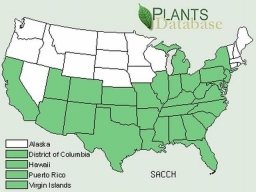| Sugarcane - Saccharum officinarum | |||||||||||||||||||||||||||||||||||||||||||||||||||||||||||||||||||||||||||||||||||||||||||||||||||||||||||||||||||||||||||||||||
|---|---|---|---|---|---|---|---|---|---|---|---|---|---|---|---|---|---|---|---|---|---|---|---|---|---|---|---|---|---|---|---|---|---|---|---|---|---|---|---|---|---|---|---|---|---|---|---|---|---|---|---|---|---|---|---|---|---|---|---|---|---|---|---|---|---|---|---|---|---|---|---|---|---|---|---|---|---|---|---|---|---|---|---|---|---|---|---|---|---|---|---|---|---|---|---|---|---|---|---|---|---|---|---|---|---|---|---|---|---|---|---|---|---|---|---|---|---|---|---|---|---|---|---|---|---|---|---|---|---|
 Fig. 1  Sugarcane and bowl of refined sugar 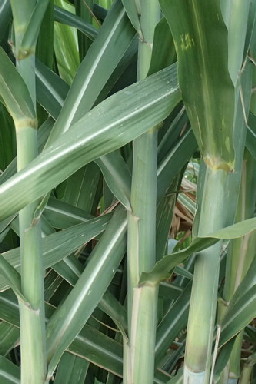 Fig. 2  Leaves  Fig. 3  Sugarcane flowers, which produce seeds. Because seeds from a single sugarcane flower differ genetically, pieces of sugarcane stalk are planted, rather than seeds, to produce new plants that are genetically identical to the parent plant. 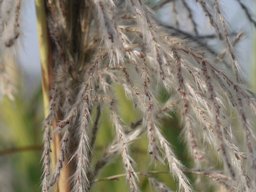 Fig. 4  S. officinarum, India 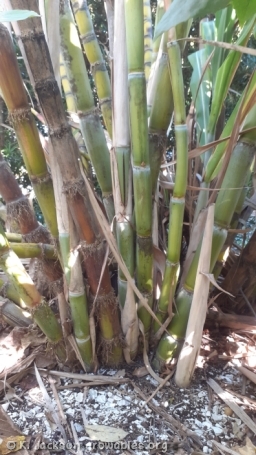 Fig. 5  Lower leaves removed revealing the segmented stalks 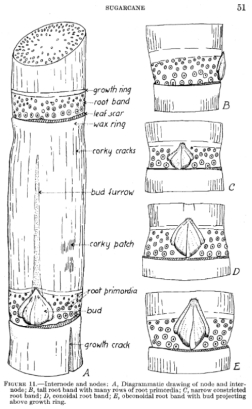 Fig. 6  Internode and nodes: A, node and internode; B, tall root band with many rows of root primordia; C, narrow constricted root band; D, eonoidal root band; E, obeonoidal root band with bud projecting above growth ring 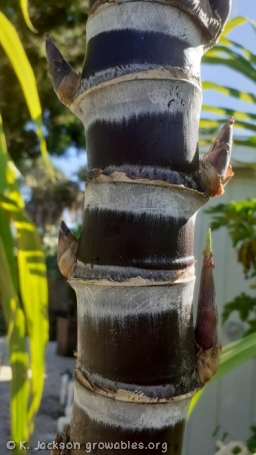 Fig. 14  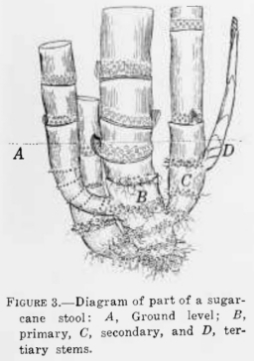 Fig. 28  Sugarcane stool 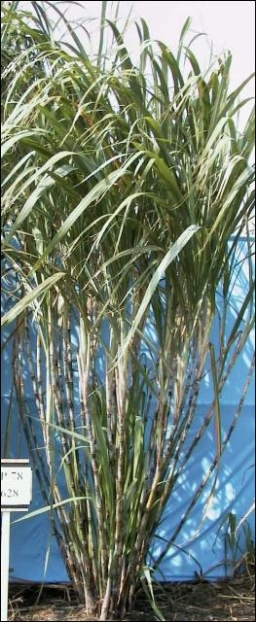 Fig. 29 CP 78-1628 stool  Fig. 30  Hawai'ian variety Iliopua with Kim and Tamara, Maui Nui Botanical Garden Kahului, Maui, Hawai'i 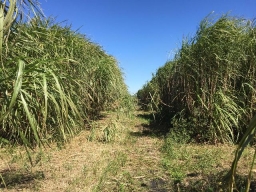 Fig. 31  Sugarcane/energy cane field 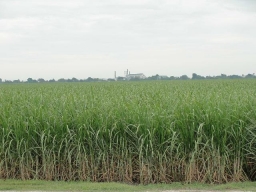 Fig. 32  Sugarcane field, Belle Glade, Florida  Fig. 33  Sugarcane/energy cane field 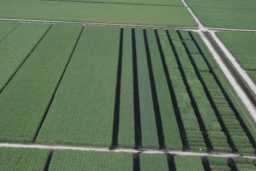 Fig. 34  An aerial view of commercial sugarcane fields, Belle Glade, Florida. In the foreground are variety test plots managed by sugarcane growers for the purpose of evaluating promising germplasm lines, a process required for the release of new cultivars. 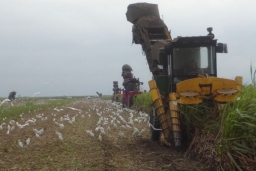 Fig. 35  Cattle egrets (Bubulcus ibis) forage for insects and soil grubs during a pause in a sugarcane harvest operation in fields west of Clewiston, Florida. 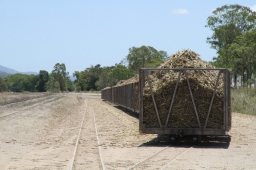 Fig. 38  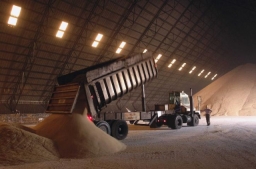 Fig. 39  Raw sugar being stored before refining  Fig. 40  Sugarcane juice stall 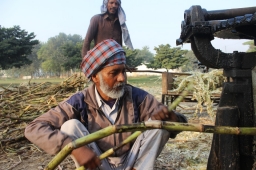 Fig. 41  Sugarcane man, India 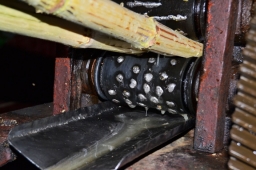 Fig. 42  Sugarcane press, Cuba 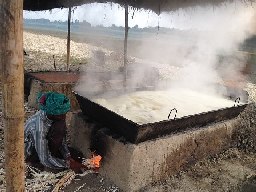 Fig. 43  Molasses made from the sugarcane juice of the village  Fig. 44  Abandoned sugar mill, Hawai'i 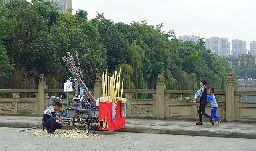 Fig. 45  Sugarcane on the bridge over Jinjiang River, China Fig. 46  A float in the Aringay Festival depicting a giant basi (tapayan), Philippines 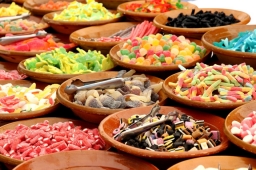 Fig. 47 Candy |
Scientific
name Saccharum officinarum L. Common names English: noble sugarcane, sugarcane, sugar cane; Arabic: qasab el-sokkar; French: canne à sucre; German: Zukerrohr; Hawai'ian: Ko; Japanese Romaji: sato-kibi; Portuguese: cana-de-açúcar; Portuguese (Brazil): cana; Spanish: caña de azúcar, caña dulce; Swedish: sockerrör; transcribed Korean: satangsusu 8 Synonyms Family Poaceae/Gramineae (grass family) Uses Food and drink; varied uses for by-products Height 4-12 ft (1.2-3.5 m) 6 Plant habit Tropical perennial grass Growth rate Rapid Life cycle/span Multi-year crop 1 Stem diameter 0.75-2 in. (2-5 cm) 6 Node spacing 4-10 in. (10-25 cm) 6 Leaf blade Very long and narrow; length: 5 ft (1.5 m) or more; width: 1-3 in. ( 2.5-8 cm) 6 Inflorescence Open-branched panicle 5 Season Typically Oct. through May; tropical countries: near continuous 6 Days to harvest About 12-14 months after planting, 11-12 months from a ratoon re-growth pH preference 5.5-6.5 1 Spacing Row: 6 ft (1.8 m) Light requirement Sun Flood tolerance Well drained 1 Temperature requirement 70-95 °F (21-35 °C) 1 Invasive potential * Low invasion risk Pest resistance Sugarcane varieties are bred to be resistant to common plant diseases 1 Known hazard Leaves have razor- sharp edges Reading Material Sugarcane Botany: A Brief View, University of Florida pdf Sugar Cane on The Run, Eat The Weeds Sugarcane Handbook, University of Florida ext. link An Overview of Florida Sugarcane, University of Florida pdf (archived) Backyard Sugarcane, University of Florida pdf (archived) Origin Several species of Saccharum are found in Southeast Asia and neighboring islands, and from these cultivated cane probably originated. The sweet juice and crystallized sugar were known in China and India some 2500 years ago. Sugar cane reached the Mediterranean countries in the eighth century A.D., and reached the Americas in early colonial times. Florida, Louisiana, and Texas are the only areas in the United States where sugarcane is grown commercially. 6 Description Sugarcane (Saccharum interspecific hybrids) is the main source of sugar in the world. It is grown in more than 90 countries in tropical and subtropical regions. Cultivation techniques and production challenges vary by location. 2 Although sugarcane can be grown throughout Florida, it is only produced commercially around the southern end of Lake Okeechobee. Currently, the entire crop (396,528 acres) is used for the production of table sugar. 3 There are basically three types of sugarcane grown for the production of syrup, crystals or chewing.
Fig. 7. Types of internode Fig. 8. Blade joint and sheath base: A, Detailed structure of blade joint, showing location of the various hair groups; B, structure of sheath base, showing location of hair groups Fig. 9. Hair groups on prophyll: A, anterior side; B, posterior side Fig. 10. Sheath base and surface view of sheath, showing location of hair groups The Biology of the Saccharum spp. (Sugarcane), Australian Government pdf Leaves Avoid planting sugarcane along the edges of high-traffic sidewalks or pathways. Sharp-edged sugarcane leaves can injure pedestrians. Keep in mind, too, that some sugarcane varieties are prone to fall over (lodge). 1
Fig. 11. Sharp edges Fig. 11a. Magnified Flowers For commercial sugarcane production, inflorescence development is of little economic importance in Florida. Varieties throughout the world are actually different versions of a multi-species hybrid. For this reason, variety characteristics are not genetically captured in sugarcane seeds, and sugarcane does not breed true from seeds. 1 Generally, a day length close to 12.5 hours and night temperatures between 68 and 77 degrees F will induce floral initiation. Temperatures that are too low and/or water stress inhibit inflorescence development. 5
Fig. 12. With tassles, Haliimaile, Maui Types 1. Syrup Canes contain less sucrose than crystal canes, but have additional kinds of sugar molecules that are not as readily crystallized, so when the juice is concentrated into syrup, there is a lower likelihood of crystallization as compared with a crystal or commercial cane. CP36-111; CP52-48; CP67-500; Louisiana Ribbon; Louisiana Purple; Louisiana Striped; POJ2878; Cayana; POJ 213; Green German; CP29-116. 2. Crystal Canes (typically commercial varieties) must contain a high percentage of sucrose since this is the sugar molecule that easily forms into crystals when concentrated during a heating and evaporation process. 2. Chewing Canes are generally softer and contain fibers that stick together when chewed, making it easier to spit out the pulp once the sugary juice has been consumed. Many chewing canes are also used for syrup production. Yellow Gal (F31-407); CP57-603; NG57-258; White Transparent; Georgia Red; CP31-511; Home Green. Many old-named sugarcane varieties are still available, but often only from local sources, having been preserved by farmers or hobbyists. 1 Hawai'ian Cultivars
Fig. 15. 'Pilimai', Hawea Pl Olinda, Maui Fig. 16. 'Pilimai', Maui Nui Botanical Garden Kahului, Maui Fig. 17. 'Honuaula', dark red stems, Maui Nui Botanical Garden Fig. 18,19. 'Iliopua', yellow green stems good for sugar chewing Fig. 20. 'Pakaweli', Hawea Pl Olinda Fig. 21. 'Kea', Maui Nui Botanical Garden Kahului Sugarcane Cultivar Descriptive Fact Sheets, University of Florida ext. link Florida Sugarcane Cultivar Fact Sheets, University of Florida ext. link Ripening The storage of sucrose in the stalk is known as ripening. Ripening is a joint to joint process, and the degree of maturity of the individual joints depends on their age. In young plants, the sucrose content exhibits a distinct maximum that is located approximately at soil level. The sucrose content in these plants decreases through the stalk toward the top of the stalk. As the plant matures, a more uniform sucrose content is found throughout the stalk except for the top few internodes and the below-ground stool. 5 Harvesting and Processing Sugar yields generally increase as the weather turns cooler. Using a sharp knife or lopping shears, cut the mature stalks as close to the ground as possible. The root end of the cane is the richest in sugar. Trim off the green, upper portion of the stalk that lacks sugar-accumulating nodes. Next, either squeeze/crush the stalks for juice collection or cut the stalks into smaller pieces for chewing enjoyment. Following harvest, sugarcane re-sprouts from underground buds located on basal (bottom or lower) portions of old stalks. This process is called ”ratooning”. 1,6 Maturity Curves and Harvest Schedule Recommendations for CP Sugarcane Varieties, University of Florida pdf Maturity Curves and Harvest Schedules for Specific Cultivars, University of Florida ext. link
Propagation At each node is a potential growing point - the bud or “bud-eye”. On adjacent nodes buds are located on opposite sides of the stalk. Vegetatively: a section of a mature cane stalk (a "seed-cane") with one or more buds (or "bud-eyes"). Cut each stalk into 2 - 3 foot sections (“seed-pieces” or “billets”). To ensure that a few buds survive the stresses of the planting environment, aim for seed-pieces that have around six buds. Keep in mind that cutting long stalks into shorter seed-pieces actually improves bud germination along the shorter seed-piece. Planting whole stalks is not recommended because of “apical dominance,” a process in which buds closest to the cut ends tend to get activated while interior buds might not get activated. Single-node pieces (Fig. 23), which contain a single bud, can be planted in pots or trays and later transplanted at the target site. 1
Fig. 22. Maui Nui Botanical Garden, Hawai'i Fig. 23,24. A single-node section propagated in a pot Sugarcane Eye Propagation in northern Florida, Florida State Horticulture Society Storing Planting Material Freshly cut stalks can be stored under cool, moist conditions for two weeks prior to planting. For storage longer than two weeks, dipping the seed-piece ends in hot paraffin will help protect the inner stalk from drying out. Shorter lengths of stalk can be stored in a plastic bag in a refrigerator whose temperature doesn't drop below freezing. Longer stalks can be “stored” (buried) in the ground to over-winter, followed by planting in the spring in the desired location. 1 Planting While the stool typically gets bigger over time, the combined effects of winter and mechanical damage lead to declining basal-bud viability. Eventually, stalk production declines, so expect to replant every 5 - 10 years for good ratooning varieties. Keep in mind, however, that some sugarcane varieties are infamous for their inability to “ratoon;” such varieties have to be replanted more often. Cut stalks into 2-3 ft (0.5-1 m) lengths, with about six buds. Dig furrows about 3-7 in. (8-17.8 cm) deep for loam/clay-loam soil; slightly deeper in sand and highly organic soil. Cover the seed cane with loosely packed soil to a depth of 2-5 in. (5-13 cm). It does not matter whether buds along the stalk are positioned downwards; the emerging shoot will naturally make its way to the surface. As the shoots elongate, gradually add soil to the furrow until the furrow becomes slightly elevated. In many countries, vegetable and/or nitrogen-fixing leguminous crops are planted between the rows of newly planted sugarcane. 1
Fig. 25. Sugarcane stalks in a furrow before being covered with soil Fig. 26. Hawai'ian varieties ready to plant, Oliopua Pakaweli Pilimai Honuaula Fig. 27. Cultivar "CPCL 97-2730" at early growth in sandy soil Sugarcane - Planting, University of Florida Fertilizing Nutritional Requirements for Florida Sugarcane, University of Florida pdf Nutrient Requirements for Sugarcane Production on Florida Muck Soils, University of Florida pdf Irrigation The early growth period of sugarcane is particularly sensitive to excessive moisture. Keep the soil slightly moist, but not wet. Within 1-to-3 weeks, depending on soil temperatures, new shoots should emerge through the soil. After excessive rainfall water can be pumped out of fields, however, once the shoots have reached 6 - 8 inches tall they can tolerate short periods of standing water. 1,4 Pests/Diseases/Weeds Wireworms and grubs, a stalk borer, mealy bugs, termites and aphids. Many pests are adequately controlled by natural predators, parasites, and/or changing seasonal conditions. Sugarcane growth is so rapid that the plant can typically tolerate considerable insect infestation and still produce a satisfactory crop. 1 Rodents and rabbits are often the most serious pests that backyard sugarcane enthusiasts encounter. To some extent, these large pests can be managed by installing physical barriers. 1 Florida Crop/Pest Profile: Sugarcane, University of Florida pdf Abundance of Soil Insect Pests in Florida Sugarcane, University of Florida pdf Insect Management in Sugarcane, University of Florida pdf Sugarcane Weeds (Sugarcane Handbook), University of Florida ext. link Culture in Other Countries
Fig. 36. Harvest with bullocks and carts, India Fig. 37. Harvested by women, Vietnam Food Uses Refined sugar, raw sugar, molasses, alcohol, rum, yeast, syrups, dextran, confectionary, crude wax, and glucose. 7 Basi (Fig. 46) is the local beverage of Ilocos in northern Luzon in San Ildefonso where it has been consumed since before the Spanish conquest. In the Philippines, commercial basi is produced by first crushing sugarcane and extracting the juice. The juice is boiled in vats and then stored in earthen jars (tapayan). Once the juice has cooled, flavorings made of ground glutinous rice and duhat (java plum) bark or other fruits or barks is added. The jars are then sealed with banana leaves and allowed to ferment for several years. The resulting drink is pale red in color. If fermented longer, it turns into suka or vinegar.
Fig. 48. Brown sugar Fig. 49. Jaggery, தமிழ்: கரும்பு வெல்லம் Fig. 50. Nicely peeled and cut sugarcane, packed in transparent polythene, Ghana Fig. 51. Sugar lumps Fig. 52. Sugar cane pieces Fig. 53. Organically produced blackstrap molasses, Paraguay Fig. 54. Sugar cane/juice, Ecuador Fig. 55. Sirup vom Sirupier de Berne Fig. 56. Several brands of cachaça (distilled spirit made from fermented sugarcane juice) Fig. 57. Bottled sugarcane juice Fig. 58. Sugarcane juice is the juice extracted from pressed sugarcane, it is served, often cold, and sometimes with other ingredients such as a squeeze of lemon or lime, pineapple, passionfruit, ginger or ice Types of Sugar, The Sugar Association pdf Nutritional Value Ingredients: Sugarcane Juice, Citric Acid (0.01%)
Medicinal ** Reported to be antidote, antiseptic, antivinous, bactericide, cardiotonic, demulcent, diuretic, intoxicant, laxative, pectoral, piscicide, refrigerant, and stomachic. It is a folk remedy for arthritis, bedsores, boils, cancer, colds, cough, diarrhea, dysentery, eyes, fever, hiccups, inflammation, laryngitis, opacity, skin, sores, sore throat, spleen, tumors, and wounds. 9 Other Uses Bagasse: paper, particleboard, animal feed, particleboard, ethanol, steam/electricity, bio-sorbant. Ash: plant nutrients/fertilizer. Wax: pharmaceutical, cosmetics; ethanol, garden mulch. Eco friendly plates, bowls, takeout containers and other packaging products are produced with sugarcane fiber in Florida. 7
Fig. 59. Dual-fuel gas station, alcohol (ethanol) and gasoline, Brazil Byproducts of sugar production, Dept. Health, Australian Gov't. Production of Biofuel Crops in Florida: Sugarcane/Energy Cane, University of Florida pdf Diversified Use of Byproducts of Sugarcane and Cotton - A Review, International Journal of Current Microbiology and Applied Sciences pdf General
Fig. 60. Occurrence of Saccharum L. in the United States, indicated by green areas of map Further Reading Florida Sugar Cane League ext link Saccharum officinarum L., Handbook of Energy Crops Sugar Cane, NewCROP™, Purdue University Sweet Future for Mungbean in Pakistan, World Vegetable Center Sugar Cane Growers Cooperative of Florida ext link The Sugar Association ext link Botanical Art Older Material Culture of Sugarcane for Sugar Production in Louisiana, 1964, USDA pdf Culture of Sugarcane for Sirup Production, 1961, USDA pdf Sugarcane (Saccharum officinarum L.), 1958, USDA pdf List of Growers and Vendors |
||||||||||||||||||||||||||||||||||||||||||||||||||||||||||||||||||||||||||||||||||||||||||||||||||||||||||||||||||||||||||||||||
| Bibliography 1 Baucum, L., et al. "Backyard Sugarcane." Agronomy Dept., UF/IFAS Extension, SS-AGR-253, Aug. 1999, Rev. Oct. 2009, Archived, UFDC, ufdcimages.uflib.ufl.edu/IR/00/00/34/15/00001/SC05200.pdf. Accessed 25 Nov. 2019. 2 Rott, P., et al. "Florida Crop/Pest Profile: Sugarcane." Agronomy Dept., UF/IFAS Extension, PI-171, Original pub. Aug. 2008, Rev. May 2018, July 2022, and Dec. 2033, AskIFAS, edis.ifas.ufl.edu/pi207. Accessed 26 Nov. 2019, 30 Dec. 2023. 3 Sandhu, Hardev S., and Robert Gilbert. "Production of Biofuel Crops in Florida: Sugarcane/Energy Cane." Agronomy Dept., UF/IFAS Extension, SS-AGR-298, Original pub. Jan. 2008, Rev. Dec. 2017, and 2021, AskIFAS, edis.ifas.ufl.edu/ag303. Accessed 26 Nov. 2019. 4 Baucum, L. E., and R. W. Rice. "An Overview of Florida Sugarcane." Agronomy Dept., UF/IFAS Extension, SS-AGR-232, Original pub. July 1992, Rev. Aug. 2009, Archived, UFDC, ufdc.ufl.edu/IR00003414/00001?search=overview+=florida+=sugarcane. Accessed 26 Nov. 2019. 5 Sandhu, Hardev S., et al. "Sugarcane Botany: A Brief View." Agronomy Dept., UF/IFAS Extension, SS-AGR-234, Original pub. Aug. 1993, Rev. July 2019, AskIFAS, edis.ifas.ufl.edu/ag303. Accessed 26 Nov. 2019. 6 Magness, J. R., et al. "Sugar cane." Food and feed crops of the United States. Interregional Research Project IR-4, IR Bul. 1, 1971, NewCROP™, hort.purdue.edu/newcrop/Crops/Sugar_cane.html. Accessed 27 Nov. 2019. 7 "The Biology of Saccharum spp. (Sugarcane)." Office of the Gene Technology Regulator, V. 3, Dept. Health, Australian Gov't., May 2011, ogtr.gov.au/internet/ogtr/publishing.nsf/Content/biologysugarcane-toc/. Accessed 27 Nov. 2019. 8 "Taxon: Saccharum officinarum L." USDA, Agricultural Research Service, National Plant Germplasm System, Germplasm Resources Information Network (GRIN-Taxonomy), National Germplasm Resources Laboratory, Beltsville, Maryland, 2019, U.S. National Plant Germplasm System, npgsweb.ars-grin.gov/gringlobal/taxonomydetail.aspx?id=32617. Accessed 6 Dec. 2019. 9 Duke, James A. "Saccharum officinarum L." Handbook of Energy Crops, Purdue University, Center for New Crops and Plant Products, unpublished, 1983, NewCROP™, hort.purdue.edu/newcrop/duke_energy/Saccharum_officinarum.html. Accessed 27 Nov. 2019. 10 "Cane Juice." FoodData Central, U.S. Department of Agriculture, fdc.nal.usda.gov/fdc-app.html#/food-details/600597/nutrients. Accessed 11 Dec. 2019. Videos v1 "How Do You Get Sugar From Sugar Cane?" The Sugar Association, www.sugar.org/resources/video/?ultibox=1. Accessed 28 Dec. 2019. v2 "Growing and Processing." Sugar Cane Growers Cooperative of Florida, www.sugarcaneleague.org/. Accessed 2 Nov. 2019. v3 "Sugarcane Harvest in the Everglades Agricultural Area." Conservation Technology Information Center (CTIC), www.ctic.org/resource_display/?id=985. Accessed 26 Nov. 2019. Photographs Fig. 1 "Sugarcane and bowl of refined sugar." Wikipedia, 16 July 2009, (CC BY 3.0), en.wikipedia.org/wiki/Sugarcane#/media/File:CSIRO_ScienceImage_10529_Sugarcane_and_bowl_of_sugar.jpg. Accessed 9 Dec. 2019. Fig. 2 Vanderhoff, Ron. "Sugarcane Saccharum officinarum, Orange, California, USA." iNaturalist, Reseach Grade Observation, 14 Nov. 2019, (CC BY-NC 4.0), inaturalist.org/photos/56305493. Accessed 8 Dec. 2019. Fig. 3 Shine, James M. Jr. "Sugarcane flowers." An Overview of Florida Sugarcane, Agronomy Dept., UF/IFAS Extension, SS-AGR-232, Original pub. July 1992, Rev. Aug. 2009, Archived, UFDC, ufdc.ufl.edu/IR00003414/00001?search=overview+=florida+=sugarcane. Accessed 26 Nov. 2019. Fig. 4 Valke, Dinesh. "Poaceae (formerly and, also known as Gramineae; grass family). Saccharum officinarum. Thane, India." Commons Wikimedia, via Flickr, (CC BY-SA 2.0), commons.wikimedia.org/wiki/File:Saccharum_officinarum_(4397531278).jpg. Accessed 10 Dec. 2019. Fig. 5,11,14,23,24 Jackson, K. "Sugarcane series." 2019, www.growables.org. Fig. 6,7,8,9,10 "Sugarcane (Saccharum officinarum L.)." Agriculture Handbook, Agricultural Research Service, US Dept. Agriculture, No. 122, Jan. 1958, naldc-legacy.nal.usda.gov/naldc/download.xhtml?id=CAT87208934&content=PDF. Accessed 28 Nov. 2019. Fig. 12 Starr, Forest, and Kim. "Saccharum officinarum (Ko, sugarcane). With tassles, Haliimaile, Maui, Hawaii." Starr Environmental, 13 Dec. 2005, (CC BY 4.0), starrenvironmental.com/images/image/?q=24732363212. Accessed 6 Dec. 2019. Fig. 13 Hitchcock, A.S. (rev. A. Chase). "Saccharum officinarum L. - sugarcane." Manual of the grasses of the United States, USDA Miscellaneous Publication No. 200, Washington, DC. 1950, National Plant Data Team, Greensboro, NC 27401-4901 USA., USDA, NRCS, 2019, The PLANTS Database, plants.usda.gov. Accessed 6 Dec. 2019. Fig. 15 Starr, Forest, and Kim. "Saccharum officinarum (Ko, sugarcane). Hawaiian variety 'Pilimai', Hawea Pl Olinda, Maui, Hawaii." Starr Environmental, 12 Sept. 2016, (CC BY 4.0), starrenvironmental.comimages/image/?q=29587430961. Accessed 6 Dec. 2019. Fig. 16 Starr, Forest, and Kim. "Saccharum officinarum (Ko, sugarcane). Hawaiian variety 'Pilimai', Maui Nui Botanical Garden Kahului, Maui, Hawaii." Starr Environmental, 12 Sept. 2016, (CC BY 4.0), starrenvironmental.com/images/image/?q=29668789705. Accessed 6 Dec. 2019. Fig. 17 Starr, Forest, and Kim. "Saccharum officinarum (Ko, sugarcane). Hawaiian variety 'Honuaula' dark red stems Maui Nui Botanical Garden Kahului, Maui, Hawaii." Starr Environmental, 12 Sept. 2016, (CC BY 4.0), starrenvironmental.com/images/image/?q=29587391121. Accessed 6 Dec. 2019. Fig. 18 Starr, Forest, and Kim. "Saccharum officinarum (Ko, sugarcane). Hawaiian variety 'Iliopua', Hawea Pl Olinda, Maui, Hawaii." Starr Environmental, 12 Sept. 2016, (CC BY 4.0), starrenvironmental.com/images/image/?q=24596175240. Accessed 6 Dec. 2019. Fig. 19 Starr, Forest, and Kim. "Saccharum officinarum (Ko, sugarcane). Hawaiian variety 'Iliopua' yellow green stems good for sugar chewing, Maui Nui Botanical Garden Kahului, Maui, Hawaii." Starr Environmental, 12 Sept. 2016, (CC BY 4.0), starrenvironmental.com/images/image/?q=29557748742. Accessed 6 Dec. 2019. Fig. 20 Starr, Forest, and Kim. "Saccharum officinarum (Ko, sugarcane). Hawaiian variety 'Pakaweli', Hawea Pl Olinda, Maui, Hawaii." Starr Environmental, 12 Sept. 2016, (CC BY 4.0), starrenvironmental.com/images/image/?q=29557748742. Accessed 6 Dec. 2019. Fig. 21 Starr, Forest, and Kim. "Saccharum officinarum (Ko, sugarcane). Hawaiian variety 'Kea', Maui Nui Botanical Garden Kahului, Maui, Hawaii." Starr Environmental, 12 Sept. 2016, (CC BY 4.0), starrenvironmental.com/images/image/?q=29668741965. Accessed 6 Dec. 2019. Fig. 22 Starr, Forest, and Kim. "Saccharum officinarum (Ko, sugarcane). Maui Nui Botanical Garden, Maui, Hawaii." Starr Environmental, 3 Mar. 2005, (CC BY 4.0), starrenvironmental.com/images/image/?q=24621999492. Accessed 6 Dec. 2019. Fig. 25 Swanson, Stewart. "Sugarcane stalks in a furrow before being covered with soil." Florida Crop/Pest Profile: Sugarcane, Agronomy Dept., UF/IFAS Extension, PI-171, Original pub. Aug. 2008, Rev. May 2018, AskIFAS, edis.ifas.ufl.edu/pi207. Accessed 26 Nov. 2019. Fig. 26 Starr, Forest, and Kim. "Saccharum officinarum (Ko, sugarcane). Hawai'ian varieties ready to plant Oliopua Pakaweli Pilimai Honuaula Hawea Pl Olinda, Maui, Hawai'i." Starr Environmental, 12 Sept. 2016, (CC BY 4.0), starrenvironmental.com/images/image/?q=29587423821. Accessed 6 Dec. 2019. Fig. 27 Davidson, Wayne. "'CPCL 97-2730' at early growth in sandy soil. Sugarcane Cultivars Descriptive Fact Sheet: 'CPCL 97-2730' and 'CPCL 00-4111'." Agronomy Dept., UF/IFAS Extension, SS-AGR-414, Original pub. May 2017. AskIFAS, edis.ifas.ufl.edu/sc103. Accessed 26 Nov. 2019. Fig. 28 "Diagram of part of a sugarcane stool. Culture of Sugarcane for Sirup Production." Agriculture Handbook, No. 209, Agricultural Research Service, US Dept. Agriculture, Dec. 1961, naldc-legacy.nal.usda.gov/naldc/download.xhtml?id=CAT87208446&content=PDF. Accessed 28 Nov. 2019. Fig. 29 Sandhu, H. S., et al. "Sugarcane Cultivar CP 78-1628 Descriptive Fact Sheet." Horticultural Sciences Dept., UF/IFAS Extension, SS-AGR-117, Original pub. Dec. 2001, Rev. May 2015 and July 2018, AskIFAS, edis.ifas.ufl.edu/ag132. Accessed 10 Dec. 2019. Fig. 30 Starr, Forest, and Kim. "Saccharum officinarum (Ko, sugarcane). Hawaiian variety Iliopua with Kim and Tamara, Maui Nui Botanical Garden Kahului, Maui, Hawaii." Starr Environmental, 12 Sept. 2016, (CC BY 4.0), starrenvironmental.com/images/image/?q=29668796895. Accessed 6 Dec. 2019. Fig. 31 "Sugarcane/energy cane field." Production of Biofuel Crops in Florida: Sugarcane/Energy Cane, Agronomy Dept., UF/IFAS Extension, SS-AGR-298, Original pub. Jan. 2008, Rev. Dec. 2017, AskIFAS, edis.ifas.ufl.edu/ag303. Accessed 26 Nov. 2019. Fig. 32 Rott, Philippe. "Sugarcane field in Belle Glade, Florida." Florida Crop/Pest Profile: Sugarcane, Agronomy Dept., UF/IFAS Extension, PI-171, Original pub. Aug. 2008, Rev. May 2018, AskIFAS, edis.ifas.ufl.edu/pi207. Accessed 26 Nov. 2019. Fig. 33 Rainbolt, Curtis. "Sugarcane/energy cane field." Production of Biofuel Crops in Florida: Sugarcane/Energy Cane, Agronomy Dept., UF/IFAS Extension, SS-AGR-298, Original pub. Jan. 2008, Rev. Dec. 2017, AskIFAS, edis.ifas.ufl.edu/ag303. Accessed 26 Nov. 2019. Fig. 34 Shine, James M. Jr. "Aerial view of commercial sugarcane fields." An Overview of Florida Sugarcane, Agronomy Dept., UF/IFAS Extension, SS-AGR-232, Original pub. July 1992, Rev. Aug. 2009, Archived, UFDC, ufdc.ufl.edu/IR00003414/00001?search=overview+=florida+=sugarcane. Accessed 26 Nov. 2019. Fig. 35 Rice, Ronald W. "Cattle egrets (Bubulcus ibis) forage for insects and soil grubs during a pause in a sugarcane harvest operation in fields west of Clewiston, FL." An Overview of Florida Sugarcane, Agronomy Dept., UF/IFAS Extension, SS-AGR-232, Original pub. July 1992, Rev. Aug. 2009, Archived, UFDC, ufdc.ufl.edu/IR00003414/00001?search=overview+=florida+=sugarcane. Accessed 26 Nov. 2019. Fig. 36 Sarangi, Bishnu. "Sugarcane Harvest." Pixabay, 1 Dec. 2013, Public Domain, pixabay.com/photos/sugarcane-harvest-bullock-cart-223437/. Accessed 6 Dec. 2019. Fig. 37 Robbins, Idan. "Sugar canes harvested by women in Hòa Bình province, Vietnam.” Wikimedia Commons, 13 Apr. 2014, (CC BY-SA 4.0), commons.wikimedia.org/wiki/File:Woman_collecting_sugar_canes_in_Vietnam.jpg. Accessed 8 Dec. 2019. Fig. 38 BM10777. "Rails-track-boxcar-wagon." Pixabay, 20 Oct. 2012, Public Domain, pixabay.com/photos/rails-track-boxcar-wagon-185773/. Accessed 7 Dec. 2019. Fig. 39 Zamora, Eric. "Raw sugar being stored before refining." Florida Crop/Pest Profile: Sugarcane, Agronomy Dept., UF/IFAS Extension, PI-171, Original pub. Aug. 2008, Rev. May 2018, AskIFAS, edis.ifas.ufl.edu/pi207. Accessed 26 Nov. 2019. Fig. 40 Vidurmayor. "Sugarcane Juice Stall.” Wikimedia Commons, 27 Apr. 2013, (CC BY-SA 4.0), commons.wikimedia.org/wiki/File:Sugarcane_Juice_Stall.jpg. Accessed 8 Dec. 2019. Fig. 41 Jeevan. "sugar-cane-man-machine-punjab." Pixabay, 26 Nov. 2015, Public Domain, pixabay.com/photos/sugar-cane-man-machine-punjab-1112800/. Accessed 7 Dec. 2019. Fig. 42 hoeldino. "Cuba-vinales-sugar-cane-press-sugar." Pixabay, Apr. 14, 2017, Public Domain, pixabay.com/photos/cuba-vinales-sugar-cane-press-sugar-2260548/. Accessed 7 Dec. 2019. Fig. 43 Mir ripon. "Molasses made from the sugarcane juice of the village.” Wikimedia Commons, 12 Nov. 2014, (CC BY-SA 4.0), commons.wikimedia.org/wiki/File:Sugarcane_made_of_molasses_kumarkhali,kusstia,dhaka,bangladesh.jpg. Accessed 8 Dec. 2019. Fig. 44 94932. "Hawaii-kauai-sugar-mill-abandoned." Pixabay, 26 Feb. 2016, Public Domain, pixabay.com/photos/hawaii-kauai-sugar-mill-abandoned-240301/. Accessed 7 Dec. 2019. Fig. 45 Daderot. "Sugarcane on the bridge over Jinjiang River - Hebin Road to Wangjiang Road - Chengdu, Sichuan, China.” 25 Dec. 2015, Wikimedia Commons, (CC0 1.0), commons.wikimedia.org/wiki/File:Sugarcane_on_the_bridge_over_Jinjiang_River_-_Hebin_Road_to_Wangjiang_Road_-_Chengdu,_China_-_DSC05687.jpg. Accessed 8 Dec. 2019. Fig. 46 Judgefloro. "A float in the Aringay Festival depicting a giant basi (tapayan), Philippines." Wikipedia, 22 Feb. 2014, Public Domain, en.wikipedia.org/wiki/Basi#/media/File:FvfNaguilanLaUnion0260_16.JPG. Accessed 10 Dec. 2019. Fig. 47 Kitap, Efes. "Candy." 4 Sept. 2016, Pixabay, Public Domain, pixabay.com/photos/candy-sugar-sweet-nibble-food-1666049/. Accessed 6 Dec. 2019. Fig. 48 Yusof, Tafilah. "Sugar Brown Sugar." Pixabay, 13 Sept. 2016, Public Domain, pixabay.com/photos/sugar-brown-sugar-healthy-brown-973899/. Accessed 6 Dec. 2019. Fig. 49 Maari, Thamizhpparithi. "Sugarcane Jaggery.” Wikimedia Commons, 19 May 2015, (CC BY-SA 4.0), commons.wikimedia.org/wiki/File:Sugarcane_Jaggery.jpg. Accessed 8 Dec. 2019. Fig. 50 DromoTetteh. "Nicely peeled and cut sugarcane, packed in transparent polythene, Ghana.” Wikimedia Commons, 1 Nov. 2014, (CC BY-SA 4.0), commons.wikimedia.org/wiki/File:SUGAR_CANE_001.jpg. Accessed 8 Dec. 2019. Fig. 51 Maxmann. "Sugar lumps." 12 Jan. 2019, Pixabay, Public Domain, pixabay.com/photos/sugar-sugar-lumps-granulated-sugar-3982976/. Accessed 6 Dec. 2019. Fig. 52 McBrien, Chris. "Sugar Cane Pieces." Commons Wikimedia, via Flickr, 16 Feb. 2007, (CC BY-SA 2.0), commons.wikimedia.org/wiki/File:Sugar_Cane_Pieces_(3232149734).jpg. Accessed 11 Dec. 2019. Fig. 53 Badagnani. "Organically produced blackstrap molasses produced in Paraguay." Wikipedia, 27 May 2008, (CC BY-SA 3.0), GNU 1.2, en.wikipedia.org/wiki/Molasses#/media/File:Blackstrapmolasses.JPG. Accessed 10 Dec. 2019. Fig. 54 Miers, J. "Sugar Cane Juice, Baños, Ecuador” Wikimedia Commons, 20 July 2010, (CC BY-SA 3.0), commons.wikimedia.org/wiki/File:Jugo_de_Cana.jpg. Accessed 8 Dec. 2019. Fig. 55 Sandstein. "Sirup vom Sirupier de Berne." Wikipedia, 30 Jan. 2011, (CC BY-SA 3.0), en.wikipedia.org/wiki/Syrup. Accessed 10 Dec. 2019. Fig. 56 Dohrendorf, Thomas. "Several brands of cachaça (distilled spirit made from fermented sugarcane juice)." Wikipedia, via de.wikipedia, 28 Feb. 2005, (CC BY-SA 3.0), GNU 1.2, en.wikipedia.org/wiki/Cachaça#/media/File:Cachaca.JPG. Accessed 10 Dec. 2019. Fig. 57 Ganlad. "Bottled Sugarcane juice.” Wikimedia Commons, 6 Nov. 2015, (CC BY-SA 4.0), Image cropped, commons.wikimedia.org/wiki/File:SugarcaneJuice_Raw_front.jpg. Accessed 8 Dec. 2019. Fig. 58 Rupika08. "Sugarcane juice is the juice extracted from pressed sugarcane. It is served, often cold, and sometimes with other ingredients such as a squeeze of lemon or lime, pineapple, passionfruit, ginger or ice.” Wikimedia Commons, 27 Apr. 2015, (CC BY-SA 4.0), commons.wikimedia.org/wiki/File:Sugarcane_juice.jpg. Accessed 8 Dec. 2019. Fig. 59 Ortiz, Mario Roberto Duran. "Dual-fuel gas station at Sao Paulo, Brazil. Alcohol (ethanol) and gasoline." Wikimedia Commons, 27 Apr. 2008, (CC BY 3.0), commons.wikimedia.org/w/index.php?curid=3988176. Accessed 10 Dec. 2019. Fig. 60 "Occurrence of Saccharum L. in the United States, indicated by green areas of map." The PLANTS Database, plants.usda.gov/java/profile?symbol=SACCH, Production of Biofuel Crops in Florida: Sugarcane/Energy Cane, Agronomy Dept., UF/IFAS Extension, SS-AGR-298, Original pub. Jan. 2008, Rev. Dec. 2017, AskIFAS, AskIFAS.ifas.ufl.edu/ag303. Accessed 26 Nov. 2019. * UF/IFAS Assessment of Non-native Plants in Florida's Natural Areas ** The information provided above is not intended to be used as a guide for treatment of medical conditions using plants. Published 12 Dec. 2019 KJ. Last update 27 Apr. 2024 LR |
|||||||||||||||||||||||||||||||||||||||||||||||||||||||||||||||||||||||||||||||||||||||||||||||||||||||||||||||||||||||||||||||||

